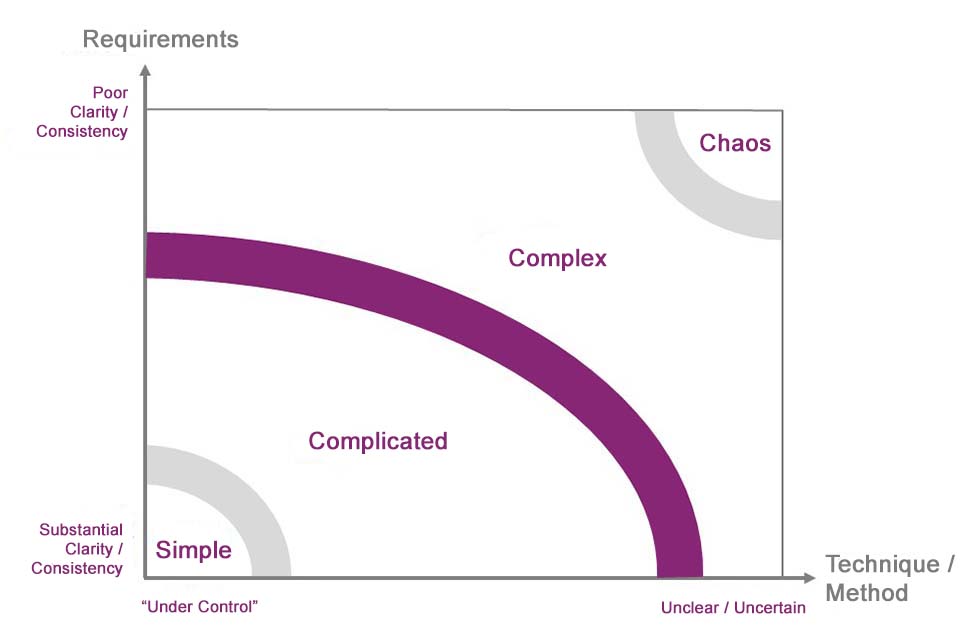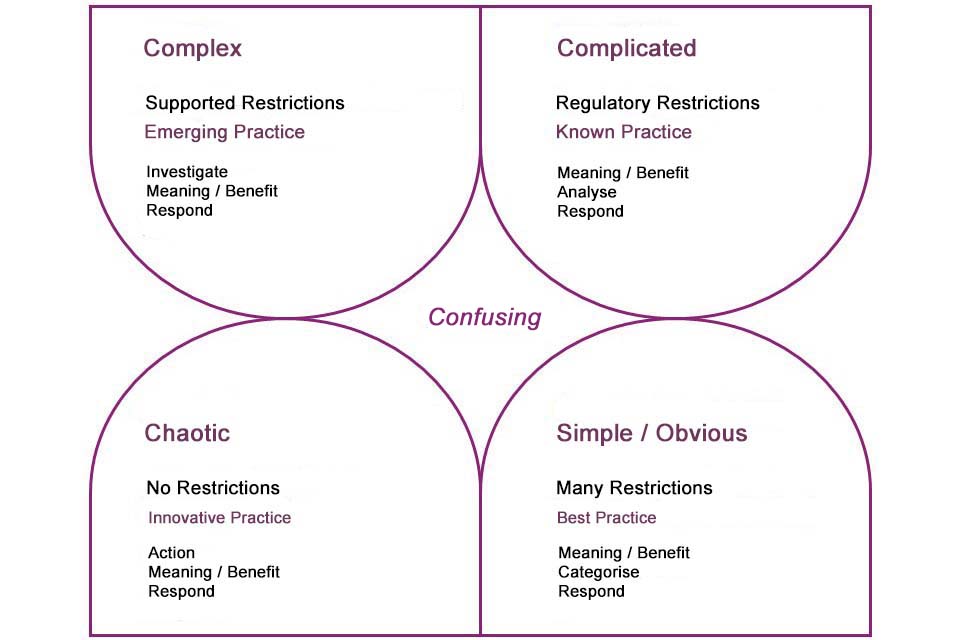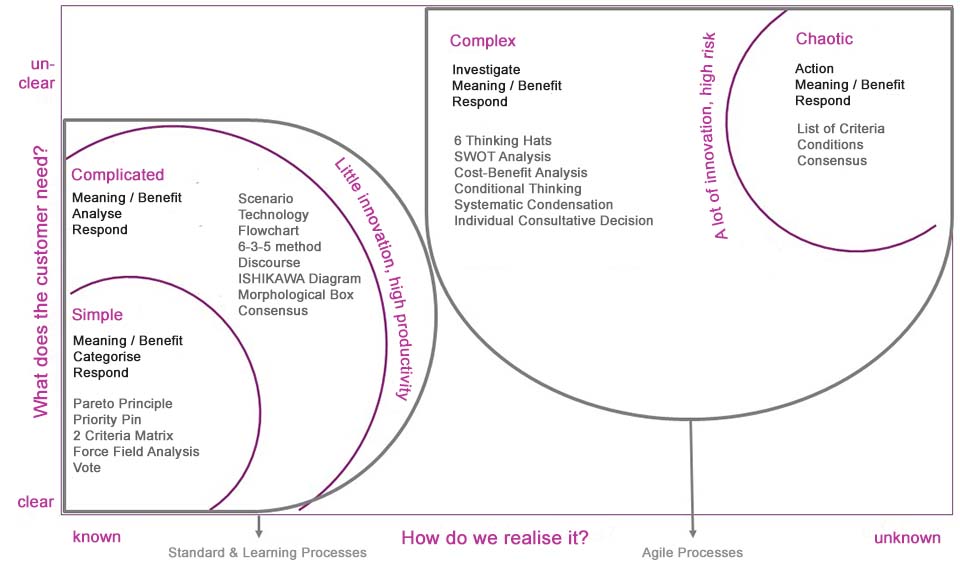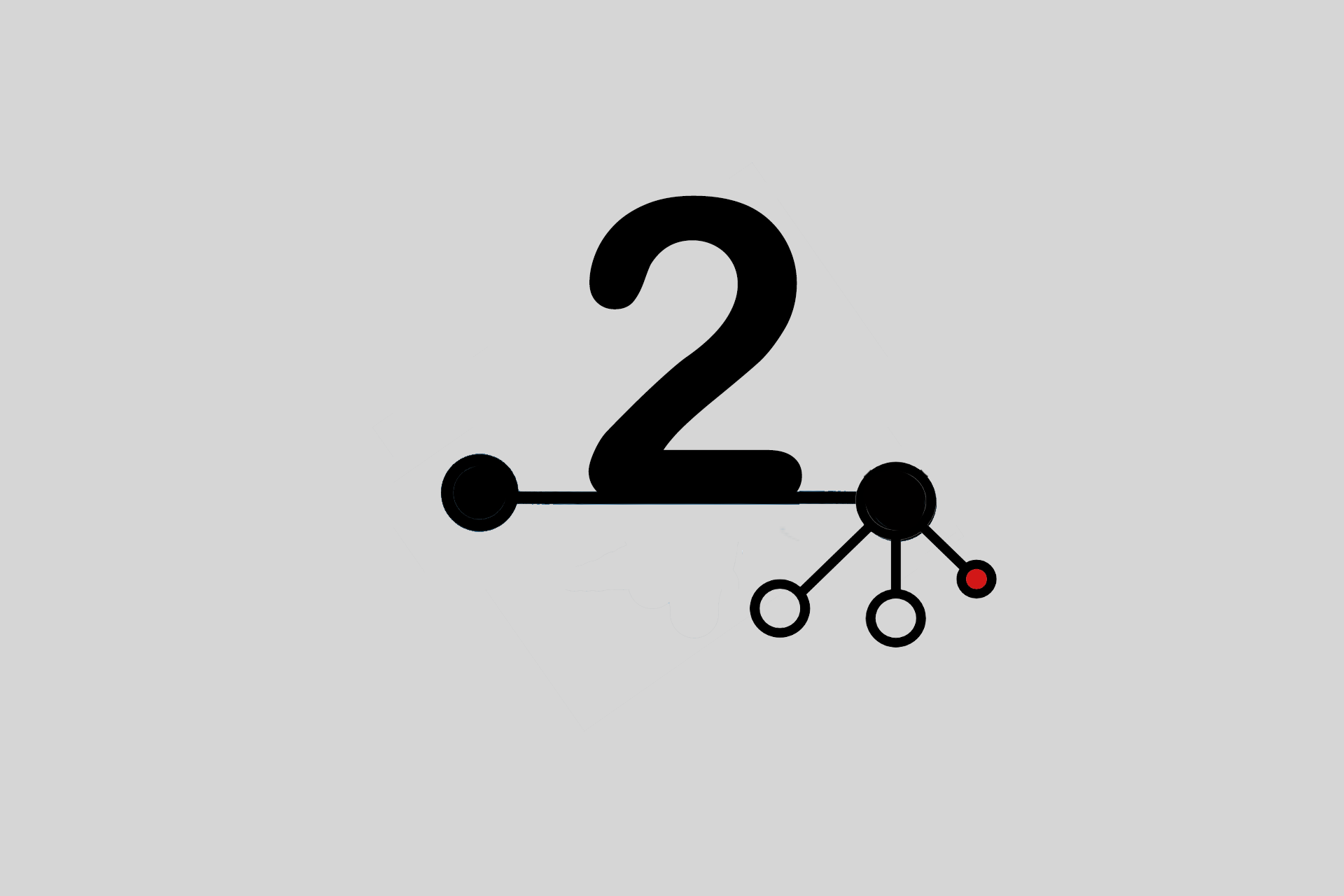Decision-making techniques for self-organised project teams – Part 1
Two tools help to answer this question:
- the Stacey Matrix and
- the Cynefin Framework.
In this article I will combine both to one model.
What is the Stacey Matrix?
The Stacey matrix was developed by Ralph Douglas Stacey¹, a professor of management at Hertfordshire Business School in the UK. It is a simple framework of rules for differentiation
- simple,
- complicated,
- complex and
- chaotic tasks.
It offers a clear portfolio structure and helps to decide which approach to take when managing projects and processes – for example, a more agile approach or a standard procedure. However, since decisions are always made in the same way, the Stacey Matrix is also generally used in the selection of decision-making techniques.
The horizontal axis of the Stacey Matrix is the “How” axis. It represents the way in which a decision is to be made or a challenge is to be overcome in order to achieve the best possible result.
The vertical axis is the “What” axis. It stands for the goals that need to be achieved and the benefits for the customer. When making a decision, both the goals and the customer benefits that need to be achieved or fulfilled and the best possible way to achieve them may be more or less known or unknown.
In my opinion, the Stacey Matrix is an effective tool for arriving at an initial assessment of the appropriate decision-making technique: Which decision technique is most likely to achieve the desired result? If the decision situation is “simple” or “complicated”, standard processes and lean approaches are usually used. If, on the other hand, it is “complex” or even “chaotic”, one should use agile decision-making techniques.
What is the Cynefin Framework?
The Stacey Matrix is very similar in content to the so-called Cynefin Framework by Dave Snowden².
Cynefin is the Welsh word for habitat. The Cynefin is a framework that was developed by IBM at the beginning of the millennium and later refined by David Snowden.
The central purpose of the framework is to provide decision makers with a compass to help them better assess a situation or issue, and to use this to derive the appropriate decision-making technique.
1. Simple systems
“Obvious” or “simple” is the category of best practices. We speak of “obvious” because there is a clearly recognisable relationship between cause and effect, which is also known. Thus we find ourselves in a context in which questions are solved by applying existing, tested decision techniques.
2. Complicated systems
Complicated questions and challenges can also be solved using proven decision-making techniques. However, the cause-and-effect relationships between the individual issues are so varied and numerous that special expertise is required and must be explicitly investigated in order to understand them.
3. Complex systems
Complex systems are, in contrast to complicated systems, disordered, so that the cause-and-effect relationships can no longer be recognised with foresight, but only in retrospect. For complex systems, experience is used. In the case of complex systems, the decision-making techniques applied should therefore take into account the experience and know-how of the project team.
4. Chaotic systems
In chaotic systems no cause-effect relationships can be identified. The system can react to identical inputs with different outputs because it is constantly changing. The project team should make use of agile decision-making techniques here.
5. Confusing systems
The state of confusion exists when it is unclear what type of system is involved. Project teams then retreat into their comfort zone, i.e. they make decisions based only on their existing experience without taking the actual situation into account. Before decisions can be made here, a reduction must be made, if necessary divided into individual steps.
Action patterns in the systems of the Cynefin Framework
The patterns of action for a procedure differ in the individual systems:
- In simple / obvious systems, the question of meaning is in the foreground, followed by categorising and responding. It is known what the customer needs and the way to get there.
- In the action pattern for complicated systems the question of meaning is also in the foreground. The correct decision-making technique should then analyse what the customer wants before action describes the path to the solution.
- In the case of complex systems, the decision technique should first support the investigation, especially since in complex systems experience values are used. The benefit for the customer can be worked out from the experience in order to react accordingly.
- In chaotic systems there is no basis on which one can rely. Even the result can be different under the same conditions. The decision techniques used are based on necessary and useful preconditions. This means that project teams / decision-makers first act or test before asking about the benefit for the customer.
With a new model for the right decision-making technique
In order for project teams to be able to understand which decision technique fits which system, it makes sense in my view to superimpose the Stacey Matrix and the Cynefin Framework. In doing so, I have deliberately avoided the fifth system “confusion”, since without reduction it does not provide a basis for decisions.
The domains of the Cynefin Framework are structured in a way that on the right side (simple/obvious and complicated), the domains are “ordered” – cause and effect are known. The domains on the left side (complex and chaotic) are “disordered”: – cause and effect can only be deduced afterwards or not at all.
In order to make a superimposition possible, I have rearranged the systems of the Cynefin Framework, but without changing the contents. Thus, the structured portfolio of the Stacey Matrix can be used.
The following graphic shows the Stacey Matrix with the corresponding action competences and the corresponding decision techniques from the Cynefin Framework:
A total of 21 decision techniques are assigned to the systems here. However, this does not claim to be complete.
Likewise, the assignment of the decision techniques to the systems is subjective. In order to show that the graph is a new representation, I have chosen the term “Cynefin Model”.
The aim of this model is to make it easier for project teams to choose the right decision technique, so that “guns on sparrows” are not fired. No “systemic condensing” is necessary for the selection of the new printer in a company. On the other hand, in the event of a major fire, I cannot use the “coordination” decision technique to determine where to start extinguishing the fire.
Conclusion
In today’s project world, project teams should be able to react quickly to changes. Making decisions is a daily challenge for agile project teams. Every project team should know a number of decision techniques and be able to use the “right” decision technique for the best possible solution. The mapping of the decision technique in the Cynefin Model supports the selection.
In this sense: Use the Cynefin Model for your next decision selection and look forward to the best possible solution.
Notes:
This article is the first in a series on “Decision-making techniques for self-organised project teams”. In further articles, Cornelia Kiel will write about values and principles as a basis for decision-making, and will describe various decision-making techniques in more detail.
[1] Information about Ralph Douglas Stacey
[2] Information about Dave John Snowden
Cornelia Kiel has published more articles here in the t2informatik Blog, including:
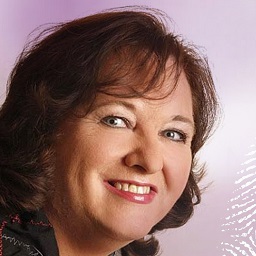
Cornelia Kiel
Cornelia Kiel has been managing projects intelligently and sustainably for over 20 years. She uses a wide range of methods: from the waterfall to the V-model and the various agile frameworks such as Scrum, Kanban or SAFe – always in the interests of an efficient project.
Her clients benefit from her extraordinary wealth of experience as a project manager, ScrumMaster, AgileCoach, moderator and BVMW-certified consultant for medium-sized companies.
In the beginning there is always the question of why. – Even as a child she drove her father to despair with this. – With this curiosity, Cornelia Kiel will work with you to find out the meaning and purpose of your project. The question of the benefit for your customer is also answered. From this starting point, you will reach the goal of your project in a focused manner.
